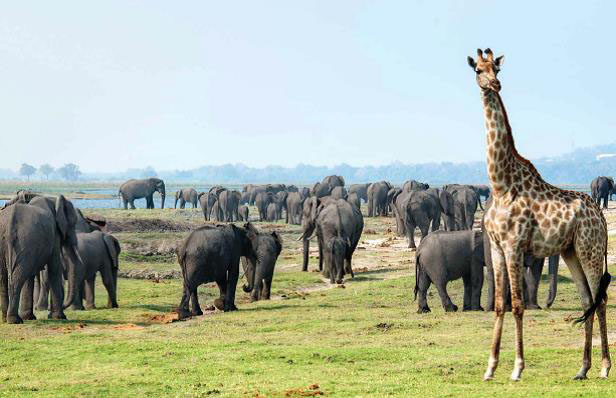'Win-win' for wildlife, African farmers stems from partnership
By Krishna Ramanujan

Namibian farmer Robin Lyonga was hoping to sell his cattle to an accredited slaughterhouse that exported meat for a good price. He planned to sell off part of his herd to help his brother get training for a better-paying career.
But then another herder’s cow many miles away developed foot-and-mouth disease, forcing the slaughterhouse to shut down. Lyonga’s animals were quarantined, and all cows in the area were declared ineligible for sale.
Such issues arise from international policies for managing animal diseases that go back more than half a century and emphasize the geographic origin of livestock to try to prevent trade of meat infected with foot-and-mouth disease.
The viral foot-and-mouth disease – which doesn’t infect people but can sicken livestock and is a concern when it comes to meat trade – is spread largely via contact between livestock and African buffalo, natural hosts of the virus that don’t get ill from it. To limit such contact, thousands of miles of fencing have been built through southern African wildlife areas since the late 1950s, often with subsidies from international donors. These fences cut off the natural migration routes of wild animals and have led to the deaths of millions of them over the last 70 years.
Now, international animal health and wildlife conservation officials, brought together by a professor from the College of Veterinary Medicine, have worked to develop a new approach that focuses on safe guidelines for meat processing to ensure the disease-free status of products, and reducing the need for fences.
“Today, wildlife is increasingly an engine for the region’s economic growth,” said Steve Osofsky, D.V.M. ’89, the Jay Hyman Professor of Wildlife Health and Health Policy, who prior to joining Cornell in July has been working on wildlife policy issues in southern Africa for more than 20 years.
“Unlike during the colonial era, when wildlife was seen to have little value, nature-based tourism today contributes as much or more to the gross domestic product of many southern African nations as agriculture, forestry and fisheries combined,” Osofsky said.
In the last decade, Angola, Botswana, Namibia, Zambia and Zimbabwe established the 500,000-square-kilometer Kavango Zambezi Transfrontier Conservation Area, or KAZA TFCA, centered around the wildlife-rich Zambezi-Okavango-Chobe-Victoria Falls region. The KAZA TFCA is home to about 250,000 elephants, the majority of the world’s remaining elephant population.
In November the KAZA TFCA, in partnership with the Food and Agriculture Organization of the United Nations and Cornell, hosted a major regional forum in Zimbabwe to move toward implementing the new approach, called commodity-based trade.
“The door is open to a truly win-win opportunity both for livestock farmers and for tourism and related industries involved with transfrontier conservation areas,” Osofsky said.
Cattle that have been managed in accordance with an official foot-and-mouth disease control policy and then quarantined before slaughter may be considered safe for trade, provided that the meat (in the case of products not undergoing further value-added processing) is deboned, deglanded, properly aged (so the pH drops accordingly) and chilled before export.
“If livestock agriculture is no longer solely dependent on veterinary fencing, then KAZA’s vision for the restoration of major movement corridors for the region’s spectacular wildlife indeed has a chance of being realized,” he added.
Media Contact
Get Cornell news delivered right to your inbox.
Subscribe